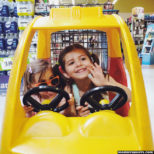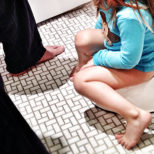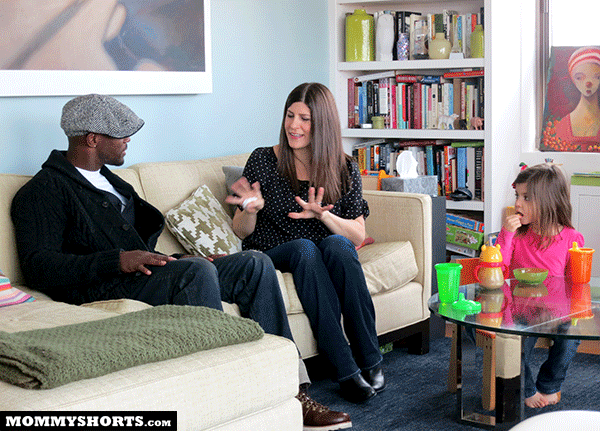My daughter just turned one and has started to poke and hit me in the face when I try to put her to bed. She is strong and sometimes it hurts. It's frustrating because I'm not sure how I should be reacting, if at all. Should I say "No!" and if so, how sternly? Should I hold her arms still to stop her even if she puts up a struggle? I think I am scared of over-reacting but I also don't want to send a message that hitting is okay. What is the best course of action?
Signed, IW
Dear IW,
Behaviors such as hitting and poking may appear aggressive at first but young children do not have the cognitive ability to perform these behaviors intentionally. Although one-year-olds are beginning to learn many new words, they do not yet have the language to communicate what they want or how they are feeling in most situations. Many children use aggressive behaviors such as hitting or poking to say, “I’m tired,” “Put me down,” “I’m mad,” or “I want to do it myself.”
Aggressive behaviors also occur because children at this age have not developed self-control. Therefore, they may know something is off limits, but because they do not have the capacity to inhibit their impulses, they will act without thinking about the consequence of their behavior. It is important to remember this when you get frustrated because you keep repeating yourself over and over again and feel like your child already knows the rule but keeps breaking it.
Below are some suggestions for how to be proactive and react effectively to the challenging bedtime behavior:
Try to Prevent it: Attempt to guess what your child is trying to communicate with the behavior (e.g., is she tired or restless, trying to get your attention, uncomfortable) and then respond accordingly. For instance, If she is tired or restless, you may need to shorten or change the bedtime routine. If she is trying to get your attention, give her a special blanket or object to hold before you put her down, or teach her another way to get your attention (e.g., showing her how to use a “gentle touch”). If she is uncomfortable, you may need to think about how you are holding her and try a different position.
Set the limit by telling and showing her: Stay calm and use a clear and firm voice without anger such as “Stop,” “Hands down” or “No hitting. Hitting hurts.” Tell and show her by putting her hands down in a quick manner so that she gets the message without causing any struggle between the two of you.
Redirection: After you set the limit or when you anticipate that she may be restless or about the exhibit the behavior, redirect her by giving her something to hold such as a small blanket or something she takes to bed. Change positions so that her arms are not so close to your face by either putting her down or turning her around.
Developmentally, young toddlers have limited language and self-control. Add that to an increasing desire to be independent and you can see why episodes of challenging behavior are common at this age. The most important thing to remember when trying to teach your child right from wrong is to be consistent, stay calm, teach appropriate behavior or language to use in each situation, and be patient.
Best of luck,
Dr. B


























My 1 year old started hitting me the other day when I was trying to get her to go down for nap. She was crying and screaming and then she started hitting me in the face. I didn’t know how to respond other than telling her no don’t hit. Thank you Dr. B for the advice on how to handle this behavior.
I will keep these tips in mind just in case Mazzy ever exhibits this kind of behavior
These are great tips again. Can Dr. B help me with how my son smashes his head off of furniture when I tell him no to something? He does this even if I say it super nicely.
Sure! Send me your question to myshort@mommyshorts.com with the subject header ASK DR. B. She’d be happy to help.
This question is actually mine. We’ll try it together.